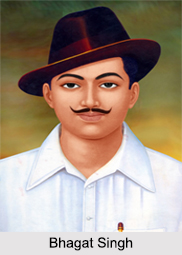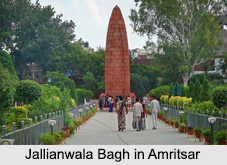 Modern History of Punjab shaped the modern state. This state was ruled by British East India Company till 1857 Sepoy Mutiny. Then the British Government in India ruled for 197 years till India got independence in 1947.
Modern History of Punjab shaped the modern state. This state was ruled by British East India Company till 1857 Sepoy Mutiny. Then the British Government in India ruled for 197 years till India got independence in 1947.
Advent of British East India Company
After the age old clashes between Sihks, Durrani, Marathas and British, finally the colonial power rose into prominence of political hemisphere. The entire Punjab was occupied by the British East India Company. By 1845 the British had moved 32,000 troops to the Sutlej River frontier, to secure their northernmost possessions against the succession struggles in the Punjab.
Anglo Sikh Wars
The first resistance against the British was Anglo Sikh War. In late 1845, British and Sikh troops engaged near Ferozepur, beginning the First Anglo-Sikh War. The war ended the following year, and the territory between the Sutlej and the Beas was ceded to Great Britain, along with Jammu and Kashmir, which was sold to Gulab Singh of Jammu, who ruled Kashmir as a British administrator.
Punjab after Sepy Mutiny
 Punjab became the hot seat of India"s Independence Movement after Sepoy Mutiny in 1857. In every way, Punjab was one of Great Britain`s most important assets in colonial India. Its political and geographic predominance gave Britain a base from which to project its power over more than 500 princely states that made up India. Lahore was a centre of learning and culture under British rule, and Rawalpindi in modern Pakistan became an important army camp for British India.
Punjab became the hot seat of India"s Independence Movement after Sepoy Mutiny in 1857. In every way, Punjab was one of Great Britain`s most important assets in colonial India. Its political and geographic predominance gave Britain a base from which to project its power over more than 500 princely states that made up India. Lahore was a centre of learning and culture under British rule, and Rawalpindi in modern Pakistan became an important army camp for British India.
Jallianwala Bagh Massacre
The Jallianwala Bagh Massacre of 1919 occurred in Amritsar. In 1930, the Indian National Congress proclaimed independence from Lahore in modern Pakistan. The 1940 Lahore Resolution of the Muslim League to work for Pakistan, made Punjab the centre-stage of a different, bloodier struggle.
Communal Riot in Punjab
In 1946, there was a massive communal tensions and violence which was erupted between the majority Muslims of Punjab, and the Hindu and Sikh minorities. The Muslim League attacked the government of Unionist Punjabi Muslims, Sikh Akalis and the Congress, and led to its downfall. Unwilling to be cowed down, Sikhs and Hindus counter-attacked and the resulting bloodshed left the province in great disorder. Both Congress and League leaders agreed to partition Punjab upon religious lines, a precursor to the wider partition of the country. The British Punjab province, which includes present-day Punjab province of Pakistan, and the Indian states of Punjab, was partitioned in 1947 prior to the independence of Pakistan and subsequently, India. In India, the Punjab province was further partitioned into and forming Haryana, and Himachal Pradesh.



















